As a native of New England, the fall colors season is my favorite time of year. The air is cool, crisp, and fresh, and the summer tourists have long since gone home. Fall foliage lights up the landscape in brilliant shades of gold, orange, and red. It’s a magical window as we transition out of summer, but before the long, cold winter sets in.
While fall colors used to be local New England tradition, they now attract visitors from all over the world. As you can expect, the more popular areas often attract large crowds. These crowds take a lot of the magic of New England fall colors out of the air. Thankfully, there are plenty of places to see amazing fall colors in places that are both off-the-beaten-path and places where you wouldn’t normally think of fall foliage. Here are six of my favorite places in New England to escape the crowds and see some of the best fall foliage the region has to offer.
1. Merritt Parkway, Connecticut
Peak Fall Colors: Late October
The Merritt Parkway runs parallel to Interstate 95 across the western third of Connecticut. With its western terminus sitting just 25 miles from downtown Manhattan, it’s an easy day trip from both New York City and Hartford. The parkway is incredibly scenic for being in such a densely populated area. As a result, it’s one of the most underrated spots in southern New England to see fall colors.
When you drive the Merritt Parkway, you’ll experience the Scenic Gateway to New England. Trailers and commercial vehicles are banned, so you’ll only be sharing the road with passenger cars. With a very old-time and classic New England feel, the elaborate architecture of the Merritt Parkway’s overpasses alone is worth the drive. The trees are close to the road and often overhang the road like a tunnel. During peak fall colors, it’s absolutely spectacular.
Unfortunately, being so close to New York City also comes with its disadvantages. Traffic can be horrendous if you hit the Merritt Parkway at the wrong time of day (read: rush hour). Furthermore, many drivers consider speed limits and yield signs to be just a suggestion, which can make for white knuckle driving during rush hour. The parkway has very narrow lanes and no shoulders. As a result, accidents are fairly common, and one minor fender bender can shut down the entire parkway.
Under no circumstance should you use those disadvantages as an excuse to not drive the Merritt Parkway. Just try to avoid it at rush hour. If you run into traffic, don’t hesitate to get off and drive north (away from I-95) on the surface streets. You don’t have to go far to get out of the congestion, away from civilization, and out into nature where you’ll have the breathtaking New England fall colors all to yourself.
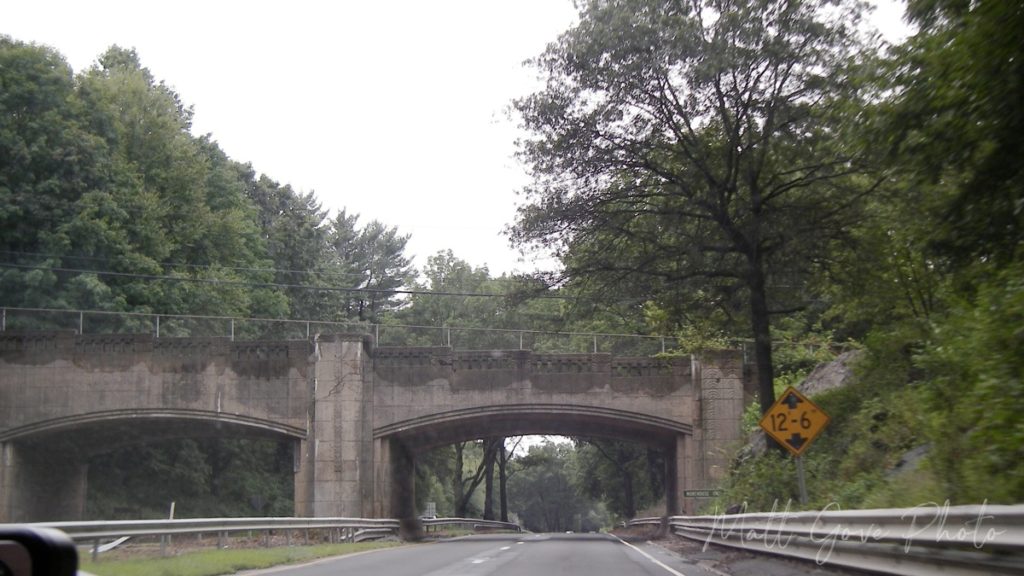
2. Cape Cod, Massachusetts
Peak Fall Colors: Late October/Early November
OK, I’m a bit biased here because I grew up on Cape Cod and my family still lives there. But it doesn’t diminish that the Cape is absolutely spectacular in the fall. In fact, September and October are probably my two favorite months to be on Cape Cod. The summer tourists have long since gone home, so crowds are virtually non-existent. However, do note that things may be a bit busier than normal, as people from both Boston and New York have been using their Cape homes to escape the city during the COVID-19 pandemic.
As popular as Cape Cod is during the summer, most people don’t consider it for viewing fall colors. Not that I’m complaining, I like it when it’s quiet. But most people instead look to northern New England and the western half of Massachusetts for the best fall foliage viewing. Cape Cod’s world-famous beaches combined with peak fall colors provide you with an intense sensory overload of colors that cover nearly the entire color wheel.
So where would I go to see fall colors on Cape Cod? The most scenic drive hands down in Route 6A. Take the first exit after you go over the Sagamore Bridge and follow Route 6A down Cape to its eastern terminus in Orleans. You’ll pass beaches, nature preserves, and quaint towns. From Orleans, you have a few options. You can continue further on US-6 East up to Provincetown and take in the fall colors along the Cape Cod National Seashore. Or, if you’re ready to head home, just get on the Mid-Cape Highway (US-6) going west. It’s about a 40 minute drive back to the Sagamore Bridge. There are plenty more options to see fall colors on Cape Cod, but if you only had one day, I’d drive Route 6A.
Finally, if you’re considering a trip to Cape Cod to take in the fall colors, pay at least some attention to the weather during the two or three weeks before you arrive. Late season hurricanes and early season nor’easters occasionally impact Cape Cod in mid-to-late October. These storms can (and more often than not do) blow all the leaves off the trees before fall colors peak. The last thing you want is to make the trip only to find a recent storm ruined peak fall colors for you. Thankfully, these October storms are the exception instead of the rule on Cape Cod.
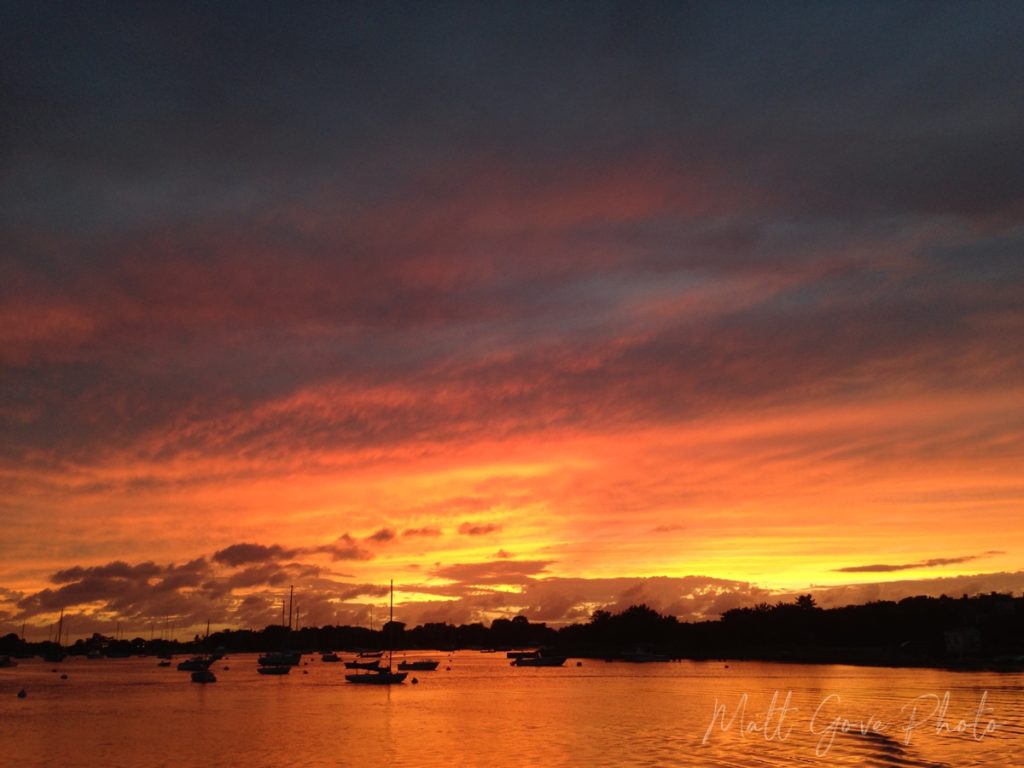
3. Mount Washington, New Hampshire
Peak Fall Colors: Late September to Mid-October
One of the great things about being somewhere you have elevation is that it extends the duration of the peak fall colors. That peak starts at the top of the mountain and progressively works its way down to the bottom. Instead of just having a one or two week window of peak fall colors, that window can be as long as 4 to 6 weeks, depending on the height of the mountain. That’s part of what makes fall colors in places like Colorado so spectacular.
You can take full advantage of this strategy right in New England. At 6,288 feet (1,917 m) above sea level, the summit of Mt. Washington is both the highest point in the northeast and the most prominent feature east of the Mississippi River. By varying your elevation, the window of peak fall colors on Mt. Washington often lasts at least three to four weeks, if not more.
Furthermore, the summit of Mt. Washington has the added advantage that it’s above the tree line. Indeed, on a clear day, you can see Canada, Maine, Vermont, and Massachusetts from the summit. With an unobstructed view from the summit, being able to see the blanket of brilliant New England fall colors for miles and miles is nothing short of breathtaking. Just be aware that the road up the mountain is very steep, narrow, and winding with sheer dropoffs and no guardrails. If that type of driving is not for you, take the train to the top or hire one of the tour companies to drive you up.
“The Worst Weather in the World”
If you decide to venture all the way to the summit, make sure you bring warm clothing. There’s a reason the observatory uses the slogan “the worst weather in the world.” The summit of Mt. Washington is famous for having some of the worst weather in the world. The summit can be 30 to 50 degrees (Fahrenheit) colder than the base of the mountain. Freezing temperatures and snow can occur year round.
In addition to its frigid temperatures, the summit is notorious for its relentless winds because it’s high enough to pierce the jet stream. Tropical storm force winds are a routine occurrence. On 12 April, 1934, anemometers at the summit of Mt. Washington recorded a wind gust of 231 mph (372 km/h). To this day, that record still stands as the strongest wind gust ever recorded with an anemometer in the Northern Hemisphere. On a side note, those 300-plus mph wind gusts recorded in Oklahoma tornadoes in 1999 and 2013 were measured with doppler radar, not with anemometers. That’s why Mt. Washington’s record still stands today.
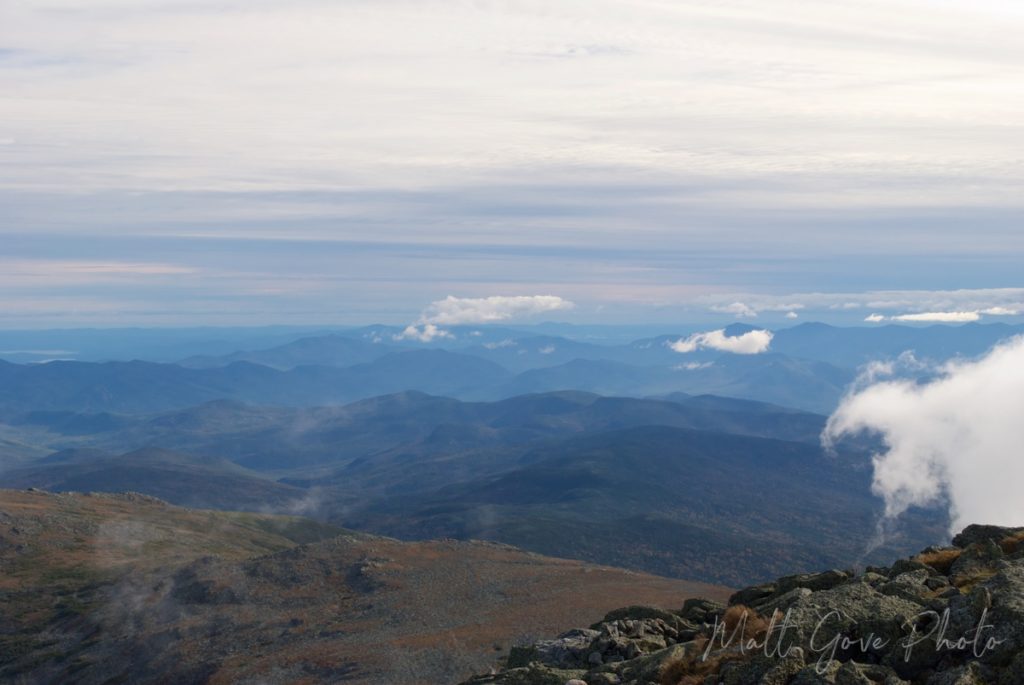
Tip: After visiting Mt. Washington, drive the nearby Kancamagus Highway (NH-112) through the breathtaking White Mountain National Forest. You’ll see covered bridges, beautiful mountain landscapes, and some of the best fall colors in New Hampshire.
4. Rangeley Lakes Scenic Byway and the Height of Land Overlook, Maine
Peak Fall Colors: Early to Mid-October
Tucked away in the corner of Maine near the triple point where Maine, New Hampshire, and Québec come together, the Height of Land Overlook is a true hidden gem. The blanket of brilliant warm fall colors on the mountains rising up from the sparkling blue waters of three large lakes is simply heavenly. The entire scenic byway is far enough off the beaten path that there are very few people up there even at the height of fall colors. It’s actually closer to Sherbrooke, Québec than any significant population center in either Maine or New Hampshire.
In addition to the Rangeley Lakes Scenic Byway, the area is full of beautiful drives that are just spectacular when fall colors are at their peak. From the town of Rangeley, head west on Highway 16 to Errol, NH. Alternatively, head north on Highway 27 to the Canadian border. For even more adventure, cross the border into Québec and complete the loop.
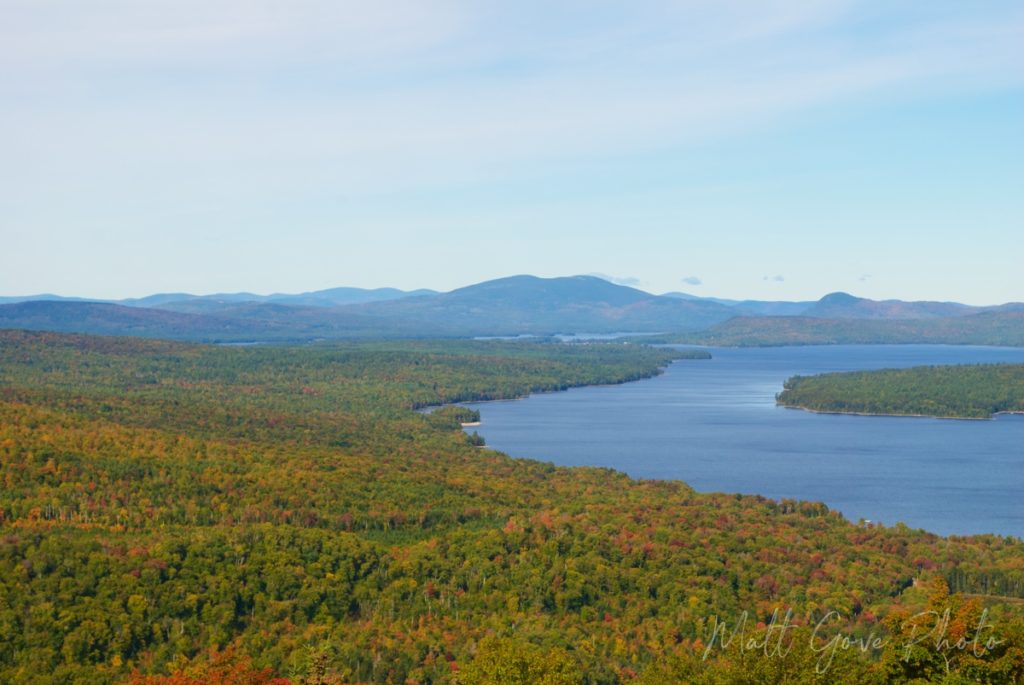
5. The Northeast Kingdom, Vermont
Peak Fall Colors: Late September to Mid-October
Vermont is the most popular destination in New England to see fall colors. Not surprisingly, getting away from crowds can be a bit of a challenge. Vermont’s Northeast Kingdom is exactly where you would expect it to be: tucked away in the northeast corner of the state in the heart of the breathtaking Green Mountains. You’ll find stunning vistas and beautiful landscapes nearly everywhere you look. Covering over 2,000 square miles, the Northeast Kingdom is one of the most sparsely populated areas in Vermont.
Like the Height of Land Overlook, the Northeast Kingdom is far enough off the beaten path that few people venture up there. Instead, most leaf peepers stay further west, near Montpelier and Burlington. The many ski resorts near the city provide easy access to pretty spectacular fall colors. You shouldn’t have too many issues with crowds in the Northeast Kingdom. However, if you do, don’t be afraid to hop across the border into New York, New Hampshire, or Québec. You’ll often find much smaller crowds there.
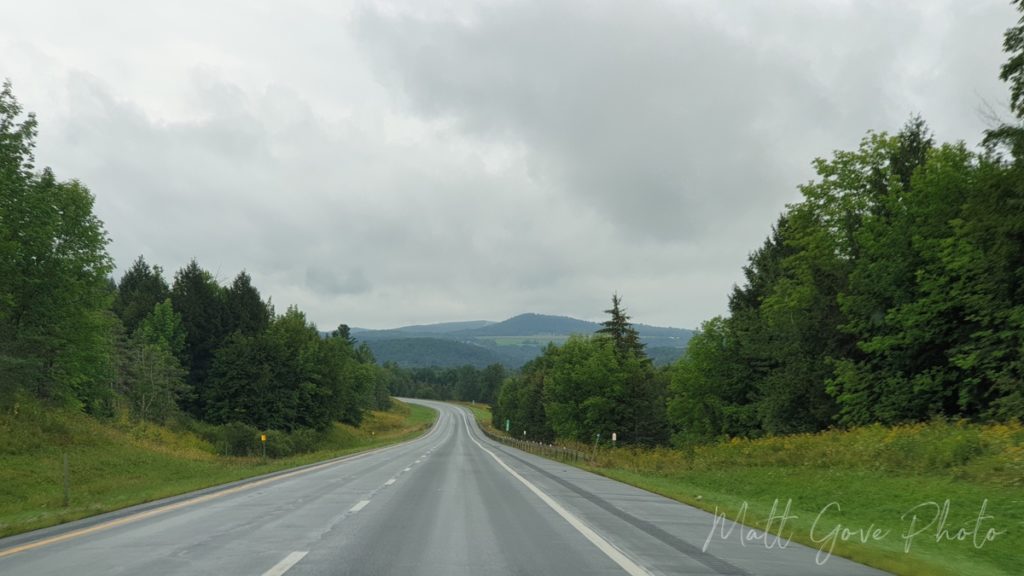
6. QC-247 and Autoroute 10: The Gateway to Fall Colors in Québec
Peak Fall Colors: Late September to Early October
Okay, this is technically not New England, but hear me out. With Canada having reopened its border to fully vaccinated travelers, don’t rule out fall colors north of the border. The landscapes can be even more scenic than New England, and crowds are few and far between. Fall foliage viewing opportunities in Québec alone cover more land area than New England several times over. And southern Québec is full of something you won’t find too many of in New England: National Parks.
Heading east out of Montréal, you’ll find four National Parks within 25 miles (40 km) of the US border. They’re all within a three hour drive from downtown Montréal. Head north from Montréal an you’ll find even more than the parks listed below.
| National Park | Nearest City or Town |
|---|---|
| Parc National du Mont Saint-Bruno | Longueuil / Montréal-Est |
| Parc National de Yamaska | Granby |
| Parc National du Mont Orford | Magog |
| Parc National du Mont Mégantic | Notre Dame des Bois |
| Parc National de Frontenac | Sainte Praxède |
If the National Parks leave you craving even more fall colors, head to any of the lakes that cover the southern Québec landscape. You’ll find the most accessible lakes near Sherbrooke and Magog. However, you shouldn’t stop there. Just 60 miles (100 km) northeast of Sherbrooke, you’ll find Lac St. François, which sits inside of Parc National du Frontenac, as well as Lac Mégantic. While much of the town of Lac Mégantic burned down following the infamous rail disaster in 2013, scenery around the lake that goes by the same name is simply breathtaking.
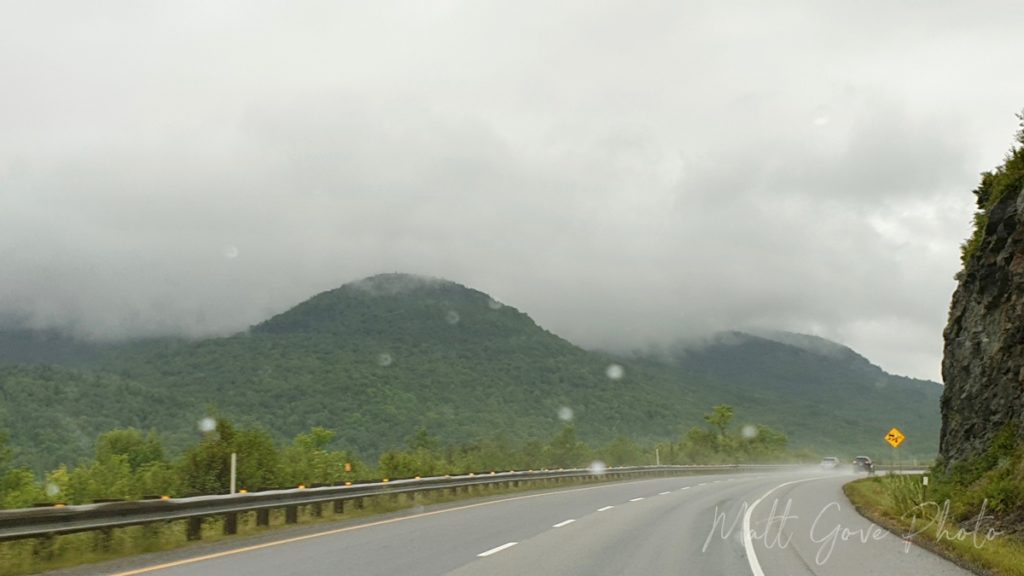
Don’t Be Intimidated By the Language Barrier
One of the primary reasons there are so fewer crowds viewing fall colors in Québec is due to many Americans being hesitant to cross the border because of the language barrier. If you’re near a major population center, such as Montréal or Sherbrooke, or a popular tourist destination, such as the national parks, you will not have any major issues speaking English only. However, once you get away from the cities and the tourist spots, it’s all French. You will stumble across people that speak English, but don’t count on it.
Like the United States, Canada’s federal government runs all of its National Parks. Because English and French are both official languages in Canada, everything inside the National Parks is bilingual. However, be aware that French is the only official language in Québec, so outside of the National Parks, road signs (and most everything else) are in French only.
COVID-19 Restrictions Entering Canada
Please obey all rules, regulations, and restrictions that Canada has put in place due to the COVID-19 pandemic. While we went over the process when Canada first reopened its border back in August, please visit the Canada Border Services Agency (CBSA) website for the most up-to-date requirements you need to enter Canada. While there are plenty of border crossings between New England and Québec, I make no guarantee that the smaller border crossings are open during the COVID-19 pandemic. Please consult with either the CBSA or with US Customs to get their latest hours of operation.
Conclusion
Peak fall colors is a truly magical time of year in New England. The soft warm colors of the changing leaves against a brilliant blue sky only makes that crisp and clean fall air taste even better. Even through the leaf peeper crowds have grown in recent years, there are still plenty of places to get away from the masses, and enjoy the peace and serenity of having the spectacular New England fall colors to yourself.
Finally, while this post has focused on New England, don’t forget about New York. While upstate offers the best viewing opportunities, the entire State of New York has pretty amazing fall colors, too. Sitting just across the river from Vermont with plenty of wilderness to offer, New York is an easy escape from the crowds that can gather in parts of New England. Where is your favorite spot to see fall colors?
Top Photo: Peak Fall Colors on the Talimena Scenic Byway
Talihina, Oklahoma – November, 2013
Pingback:The Complete Travelers' Guide to Rue Canusa - Matthew Gove Blog